- Home
- Laurie R. King
Echoes of Sherlock Holmes
Echoes of Sherlock Holmes Read online
To Sir Arthur Conan Doyle: Steel true, blade straight.
CONTENTS
INTRODUCTION
by Laurie R. King and Leslie S. Klinger
HOLMES ON THE RANGE
by John Connolly
IRREGULAR
by Meg Gardiner
WHERE THERE IS HONEY
by Dana Cameron
BEFORE A BOHEMIAN SCANDAL
by Tasha Alexander
THE SPIRITUALIST
by David Morrell
MRS. HUDSON INVESTIGATES
by Tony Lee and Bevis Musson
THE ADVENTURE OF THE DANCING WOMEN
by Hank Phillippi Ryan
RAFFA
by Anne Perry
THE CROWN JEWEL AFFAIR
by Michael Scott
UNDERSTUDY IN SCARLET
by Hallie Ephron
MARTIN X
by Gary Phillips
THE PAINTED SMILE
by William Kent Krueger
THE FIRST MRS. COULTER
by Catriona McPherson
THE CASE OF THE SPECKLED TROUT
by Deborah Crombie
THE ADVENTURE OF THE EMPTY GRAVE
by Jonathan Maberry
LIMITED RESOURCES
by Denise Mina
THE ADVENTURE OF THE EXTRAORDINARY RENDITION
by Cory Doctorow
ABOUT THE CONTRIBUTORS
ACKNOWLEDGMENTS
INTRODUCTION
by Laurie R. King and Leslie S. Klinger
A man on a mountainside shouts . . . and his words return, tumbled and shaped by the granite and grass they have encountered. A man in a too-quiet doctor’s office sets pen to paper . . . and generations later, the reverberations of his words are still felt.
Echoes of Sherlock Holmes is the third volume of short stories that are, as we requested from our writers, “inspired by the world of Holmes.” We did not ask for “Sherlock Holmes” stories—pastiches—or modern adaptations or commentaries: simply that the authors allow themselves to be inspired by Holmes. Then we stood back in awe.
Sherlock Holmes first appeared in 1887, the product of a young and not terribly successful Scottish doctor named Arthur Conan Doyle. Holmes was a man of his times: London in Victoria’s Golden Jubilee year was a city of glittering jewels and silk hats, diseases and starving children, impenetrable fogs and millions of gaslights. Crossings-sweepers fought back the tide of dung from 300,000 horses. Boundless determination and energy were forging an empire.
Through this setting walked a “consulting detective” and his companions, solving crimes, setting lives back into order, defining not only an era but an entire genre of storytelling. The fifty-six short stories and four novels Conan Doyle wrote about Holmes continued to be published well into the twentieth century, but even in the later stories, there remains a whiff of the gaslight, the faint clop of horses’ hooves in the background.
An echo only results from a sharp and powerful source. A tentative noise will not bounce back against those hard surfaces; soft fiction never reverberates. A century and a half after Dr. Watson met an apparently mad young potential flat-mate in the laboratory of St. Bart’s Hospital, the echoes from that scene are still bouncing through the world of fiction. And to prove that the human imagination is more powerful than the laws of physics, the seventeen echoes contained in this volume stand on their own, miraculously undimmed by any distance from the origin.
New stories using the characters of Holmes and Watson are no longer, as a matter of law, controlled by the Conan Doyle Estate Limited (a company that holds the remaining copyrights for ten of the original stories). So long as creators don’t rely overly much on “protected elements” of those late stories, they are free to make up their own adventures. This was conclusively established in November 2014 when the U.S. Supreme Court declined to overturn the decision of the 7th Circuit Court of Appeals in Klinger v. Conan Doyle Estate Limited. Not that this seems to have slowed down the business practices of the Estate (which the 7th Circuit described as “a form of extortion”). For example, they attempted to block the elegiac Mr. Holmes (starring Sir Ian McKellen, based on Mitch Cullin’s A Slight Trick of the Mind) by arguing that Holmes’s retirement was a “protected element,” since it is mentioned in a copyrighted story—even though Holmes’s retirement is also prominent in an unprotected story. (The case was resolved on undisclosed terms.)
Legal matters aside, one wonders what Conan Doyle would have made of the stories in the present volume. Some of them would confirm his beliefs as a Spiritualist: surely only automatic writing during a series of trances could explain his having forgotten Watson’s meeting with M. Dupin, Irene Adler’s unsuspected history, various prominent crimes, or the fact that Holmes’s fascination with bees began with a gun battle? As for these visitations of embodied characters—proof of ectoplasmic emanations given voice!
Others of these stories might speak more intimately to Conan Doyle’s non-Holmesian writing: a tale of evil on a remote and windswept island, 100 years in his future; a child who imagines himself a great detective.
Some, however, might have shocked even this Victorian author’s vivid imagination. Yes, he was a proponent of women’s rights (some of them, at any rate) but—a jeans-wearing young woman detective? Actresses in moving pictures? A detecting ladies’ maid? And what might he make of a detective story peopled by members of a black-power movement? Or a London that could snatch away law-abiding citizens—children, even—in the name of security? As for these revelations about Mrs. Hudson . . . ?
Sir Arthur would have put his foot down at that, to be sure.
All of which only goes to prove that when one is dealing with Sherlock Holmes, a man “who never lived and so can never die,” physics goes out the window. Rather than thinning out and fading, the Holmesian form is invigorated and made stronger with each reflecting surface (for remember, the word “inspire” means “breathe into”).
These stories prove that sometimes, echoes take on a life of their own.
HOLMES ON THE RANGE
A TALE OF THE CAXTON PRIVATE LENDING LIBRARY & BOOK DEPOSITORY
by John Connolly
The history of the Caxton Private Lending Library & Book Depository has not been entirely without incident, as befits an institution of seemingly infinite space inhabited largely by fictional characters who have found their way into the physical realm.
For those unfamiliar with the institution, the Caxton came into being after its founder, William Caxton, woke up one morning in 1477 to find a number of characters from Geoffrey Chaucer’s Canterbury Tales arguing in his garden. Caxton quickly realized that these characters—the Miller, the Reeve, The Knight, the Second Nun, and the Wife of Bath—had become so fixed in the public imagination that they had transcended their literary origins and assumed an objective reality, which was problematical for all concerned. Somewhere had to be found for them to live, and thus the Caxton Private Lending Library & Book Depository was established as a kind of rest home for the great, the good, and, occasionally, the not-so-good-but-definitely-memorable, of literature, all supported by rounding up the prices on books by a ha’penny a time.
The death of Charles Dickens in June 1870 precipitated the single greatest mass arrival of such characters in the Caxton’s history. Mr. Torrans, the librarian at the time, at least had a little warning of the impending influx, for—as was traditional when new characters were about to join the Caxton—he had recently received a large quantity of pristine Dickens first editions in the post, each carefully wrapped in brown paper and string, and without a return address. No librarian had ever quite managed to figure out how the books came to be sent; old George Scott, Mr. Torrans’s prede
cessor, had come to the conclusion that the books simply wrapped and posted themselves, although by that stage Scott was quite mad, and spent most of his time engrossed in increasingly circular conversations with Tristram Shandy’s Uncle Toby, of which no good could possibly have come.
Of course, Mr. Torrans had been anticipating the appearance of the Dickens characters long before the death of the author himself and the subsequent arrival of the first editions. Some characters were simply destined for the Caxton from the moment that they first appeared in print, and Mr. Torrans would occasionally wander into the darker realms of the Caxton, where rooms were still in the process of formation, and try to guess which figures were likely to inhabit them. In the case of Dickens, the presence of a guide to the old coaching inns of Britain provided a clue to the future home of Samuel Pickwick, and a cheap bowl and toasting fork would serve as a reminder to Oliver Twist of the terrible early start to life that he had overcome. (Mr. Torrans was of the opinion that such a nudge was unnecessary under the circumstances, but the Caxton was mysterious in its ways.)
In fact, Mr. Torrans’s only concern was that the characters might include rather more of the unsavory sort than he might have preferred—he was not sure what he would do if forced to deal with a Quilp, or a Uriah Heep—so it came as a great relief to him when, for the most part, the influx was largely restricted to the more pleasant types, with the exception of old Fagin, who appeared to have been mellowed somewhat by the action of the noose. Hanging, thought Mr. Torrans, will do that to a man.
But the tale of the Dickens characters is for another time. For the present, we are concerned with one of the stranger stories from the Caxton’s annals, an occurrence that broke many of the library’s long-established rules and seemed destined, at one point, to undermine the entire delicate edifice of the institution.
In December 1893, the collective imagination of the British reading public suffered a shock unlike any in recent memory with the publication in the Strand Magazine of “The Final Problem,” in which Arthur Conan Doyle killed off his beloved Sherlock Holmes, sending him over a cliff at the Reichenbach Falls following a struggle with his nemesis, Professor Moriarty. The illustrator Sidney Paget captured the hero’s final moments for readers, freezing him in a grapple with Moriarty, the two men leaning to the right, clearly on the verge of falling, Moriarty’s hat already disappearing into the void, foreshadowing the inevitable descent of the two men.
The result was a disaster for the Strand. Many readers immediately canceled their subscriptions in outrage, almost causing the collapse of the periodical, and for years after, staff would refer to Holmes’s death only as “a dreadful event.” Black armbands were allegedly worn by readers in mourning. Conan Doyle was shocked by the vehemence of the public’s reaction, but remained unrepentant.
It’s fair to say that Mr. Headley, who by that point had succeeded Mr. Torrans as the librarian upon the latter’s retirement, was just as shocked as anyone else. He was a regular subscriber to the Strand, and had followed the adventures of Holmes and Watson with both personal and professional interest: personal in the sense that he was an admiring, engrossed reader, and professional because he knew that, upon Conan Doyle’s death, Sherlock Holmes and Dr. Watson would inevitably find their way to the Caxton. Still, he had been looking forward to many more years of their adventures, and so it was with no small amount of regret that he set aside the Strand after finishing “The Final Problem,” and wondered what could have possessed Conan Doyle to do such a thing to the character who had brought him both fame and fortune.
But Mr. Headley was no writer, and did not profess to understand the ways of a writer’s mind.
Let us step away from the Caxton for a moment, and consider the predicament of Arthur Conan Doyle in the year of publication for “The Final Problem.” In 1891, he had written to his mother, Mary Foley Doyle, confessing that “I think of slaying Holmes . . . and winding him up for good and all. He takes my mind from better things.” In Conan Doyle’s case, those “better things” were historical novels, which he believed more worthy of his time and talents than what he described as the “elementary” Holmes stories, the choice of that word lending an unpleasing ambiguity to Holmes’s own use of the term in the tales.
Here, then, was the apparent reason for killing off Holmes, but upon Conan Doyle’s death a peculiar piece of manuscript was delivered to the Caxton Private Lending Library, tucked into the 1894 first edition of The Memoirs of Sherlock Holmes, the volume that concluded with “The Final Problem.” It was written in a hand similar to Conan Doyle’s own, although with discernible differences in capitalization, and with an extensive footnote relating to the etymology of the word professor that was untypical of the author.
Attached to the manuscript was a letter, clearly written by Conan Doyle, detailing how he woke one morning in April 1893 to find this fragment lying on his desk. According to the letter, he wondered if it might not be the product of some form of automatic writing, for he was fascinated by the possibility of the subconscious—or even some supernatural agency—taking control of the writer in order to produce work. Perhaps, he went on to speculate, he had arisen in the night in a semiconscious state and commenced writing, for aspects of the script resembled his own. Upon the discovery of the manuscript he examined his right hand and discerned no trace of ink upon it, but was astounded to glance at his left and find that both the fingers and the edge of his palm were smudged with black, a revelation which forced him to seek the comfort and security of the nearest chair.
Good Lord, he thought, what can this mean? And, worse, what consequences might it have for his batting? Could he somehow be transforming into an ambidexter or, God forbid, a favorer of the left hand: a sinister? Left-handed bowlers on the cricket field were one thing—they were largely harmless—but left-handed batsmen were a nuisance, necessitating the rearrangement of the field and causing all kinds of fuss, bother, and boredom. His mind reeled at the awful possibilities should his body somehow be rebelling against him. He would never be able to take the crease for Marylebone again!
Gradually Conan Doyle calmed himself, and fear gave way to fascination, although this lasted only for as long as it took him to read the manuscript itself. Detailed on its closely written pages was a conversation between Sherlock Holmes and Professor Moriarty, who had apparently taken it upon themselves to meet at Benekey’s in High Holborn, a hostelry noted for the privacy offered by its booths and the quality of its wines. According to the manuscript, Moriarty had instigated the meeting by way of a note delivered to 221B Baker Street, and Holmes, intrigued, had consented to sit down with the master criminal.
In his letter, Conan Doyle explained what he found most troubling about the contents upon first perusal: he had only begun writing about Moriarty days earlier, and had barely mentioned him in the course of the as-yet-untitled story. Yet here was Moriarty, seated in Benekey’s, about to have the most extraordinary conversation with Sherlock Holmes.
Extract from the manuscript (Caxton CD/ MSH 94: MS)
Holmes regarded Moriarty intensely, his every nerve aquiver. Before him sat the most dangerous man in England, a calculating, cold-blooded, criminal mastermind. For the first time in many years, Holmes felt real fear, even with a revolver cocked in his lap and concealed by a napkin.
“I hope the wine is to your liking,” said Moriarty.
“Have you poisoned it?” asked Holmes. “I hesitate even to touch the glass, in case you have treated it with some infernal compound of your own devising.”
“Why would I do that?” asked Moriarty. He appeared genuinely puzzled by the suggestion.
“You are my archnemesis,” Holmes replied. “You have hereditary tendencies of the most diabolical kind. A criminal strain runs in your blood. Could I but free society of you, I should feel that my career had reached its summit.”
“Yes, about that archnemesis business . . .”
“What about it?” asked Holmes.
“Well, isn�
�t it a bit strange that it’s never come up before? I mean, if I’m your archnemesis, the Napoleon of crime, a spider at the heart of an infernal web with a thousand radiations, responsible for half that is evil in London—all that kind of thing—and you’ve been tracking me for years, then why haven’t you mentioned me before? You know, it would surely have popped up in conversation at some point. It’s not the kind of thing one tends to forget, really, is it, a criminal mastermind at the heart of some great conspiracy? If I were in your shoes, I’d never stop talking about me.”
“I—” Holmes paused. “I’ve never really thought about it in that way. I must admit that you did pop into my mind quite recently, and distinctly fully formed. Perhaps I took a blow to the head at some stage, although I’m sure Doctor Watson would have noted such an injury.”
“He writes down everything else,” said Moriarty. “Hard to see him missing something like that.”
“Indeed. I am lucky to have him.”
“I’d find it a little annoying myself,” said Moriarty. “It’s rather like being Samuel Johnson and finding that, every time you lift a coffee cup, Boswell is scribbling details of the position of your fingers and asking you to say something witty about it all.”
“Well, that is where we differ. It’s why I am not a scoundrel.”
“Hard to be a scoundrel when someone is always writing down what one is doing,” said Moriarty. “One might as well just toddle along to Scotland Yard and make a full confession, thus saving the forces of law and order a lot of fuss. But that’s beside the point. We need to return to the matter in hand, which is my sudden arrival on the scene.”
“It is somewhat perturbing,” agreed Holmes.
“You should see it from my side,” said Moriarty. “Perturbing isn’t the half of it. For a start, I have an awareness of being mathematically gifted.”
“Indeed you are,” said Holmes. “At the age of twenty-one you wrote a treatise on the binomial theorem, which has had a European vogue.”

 O Jerusalem
O Jerusalem Beekeeping for Beginners
Beekeeping for Beginners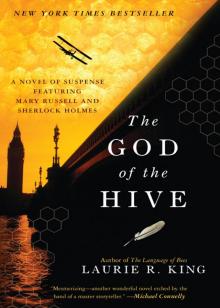 The God of the Hive
The God of the Hive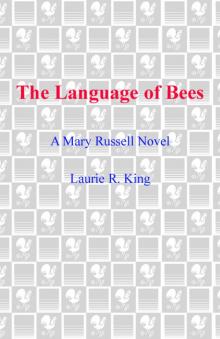 The Language of Bees
The Language of Bees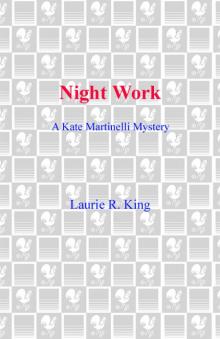 Night Work
Night Work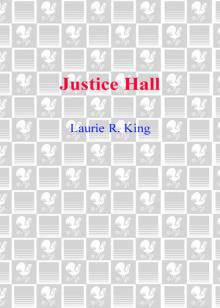 Justice Hall
Justice Hall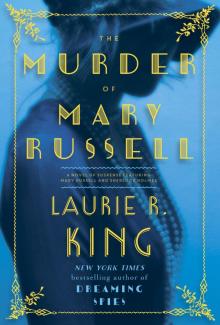 The Murder of Mary Russell
The Murder of Mary Russell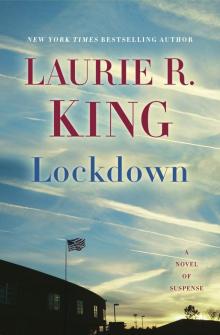 Lockdown
Lockdown To Play the Fool
To Play the Fool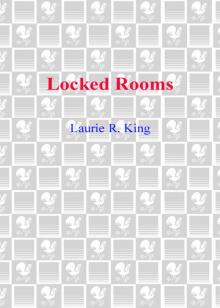 Locked Rooms
Locked Rooms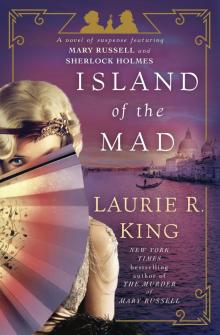 Island of the Mad
Island of the Mad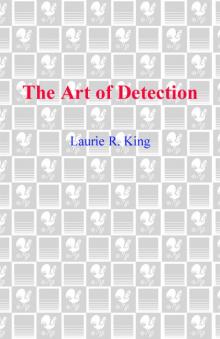 The Art of Detection
The Art of Detection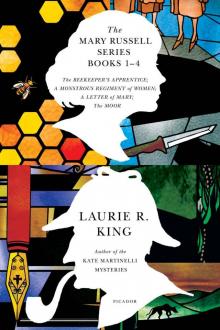 The Mary Russell Series Books 1-4
The Mary Russell Series Books 1-4 The Beekeeper's Apprentice
The Beekeeper's Apprentice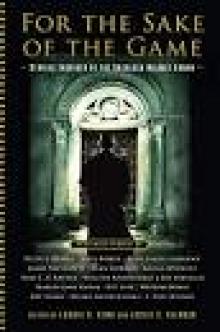 For the Sake of the Game
For the Sake of the Game A Darker Place
A Darker Place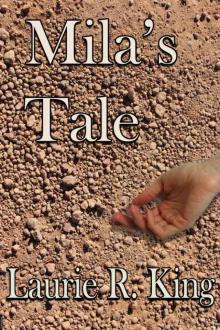 Mila's Tale
Mila's Tale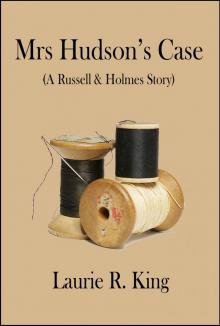 Mrs Hudson's Case
Mrs Hudson's Case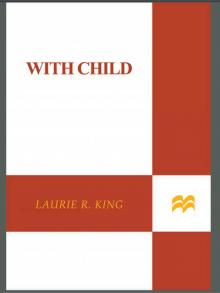 With Child
With Child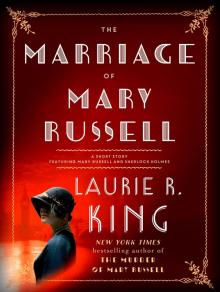 The Marriage of Mary Russell
The Marriage of Mary Russell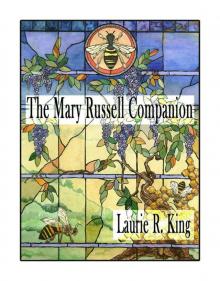 The Mary Russell Companion
The Mary Russell Companion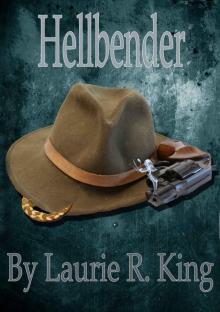 Hellbender
Hellbender Castle Shade
Castle Shade The Bones of Paris
The Bones of Paris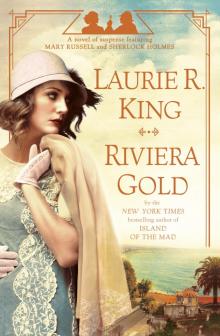 Riviera Gold
Riviera Gold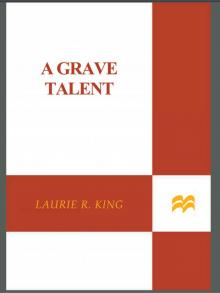 A Grave Talent
A Grave Talent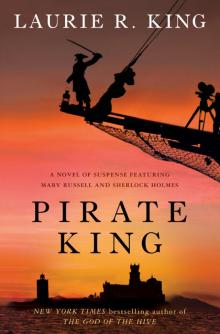 Pirate King
Pirate King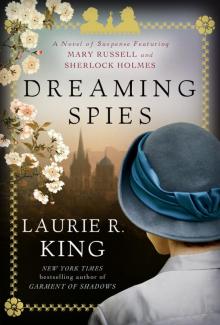 Dreaming Spies
Dreaming Spies Folly
Folly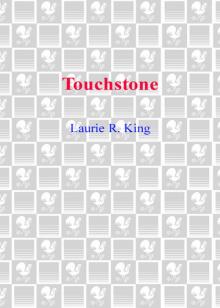 Touchstone
Touchstone The Game
The Game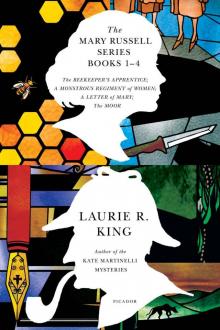 The Mary Russell Series Books 1-4: The Beekeeper's Apprentice; A Monstrous Regiment of Women; A Letter of Mary; The Moor
The Mary Russell Series Books 1-4: The Beekeeper's Apprentice; A Monstrous Regiment of Women; A Letter of Mary; The Moor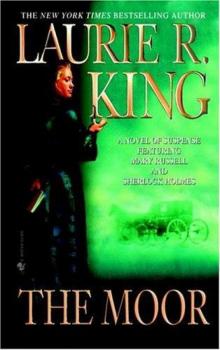 The Moor mr-4
The Moor mr-4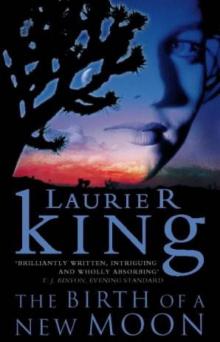 The Birth of a new moon
The Birth of a new moon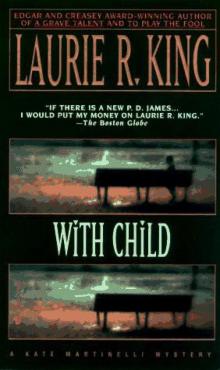 With Child km-3
With Child km-3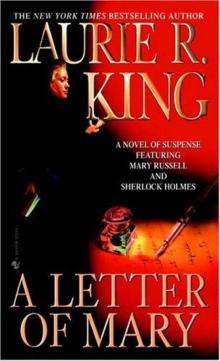 A Letter of Mary mr-3
A Letter of Mary mr-3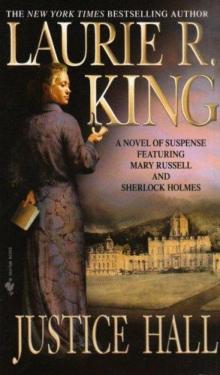 Justice Hall mr-6
Justice Hall mr-6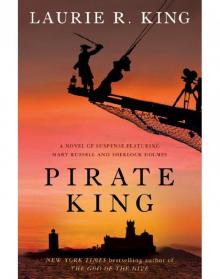 Pirate King: A novel of suspense featuring Mary Russell and Sherlock Holmes
Pirate King: A novel of suspense featuring Mary Russell and Sherlock Holmes Pirate King: A novel of suspense featuring Mary Russell and Sherlock Holmes mr-11
Pirate King: A novel of suspense featuring Mary Russell and Sherlock Holmes mr-11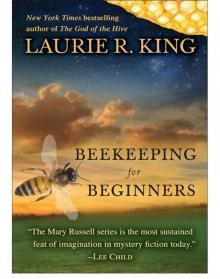 Beekeeping for Beginners (Short Story)
Beekeeping for Beginners (Short Story)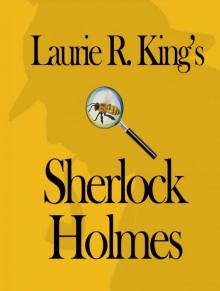 Laurie R. King's Sherlock Holmes
Laurie R. King's Sherlock Holmes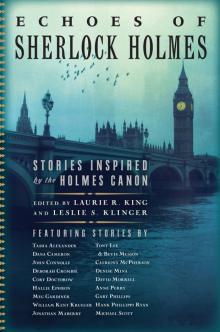 Echoes of Sherlock Holmes
Echoes of Sherlock Holmes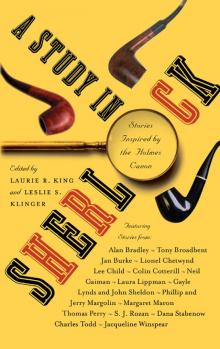 A Study in Sherlock
A Study in Sherlock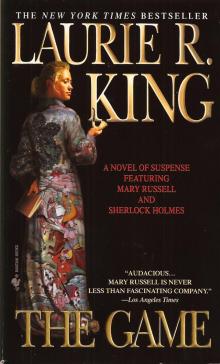 The Game mr-7
The Game mr-7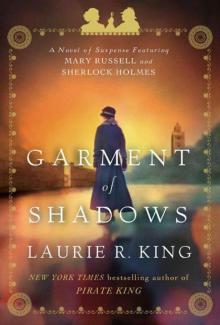 Garment of Shadows: A Novel of Suspense Featuring Mary Russell and Sherlock Holmes
Garment of Shadows: A Novel of Suspense Featuring Mary Russell and Sherlock Holmes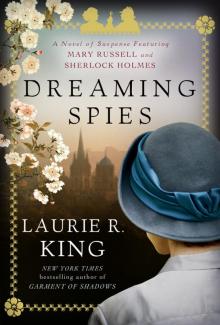 Dreaming Spies: A novel of suspense featuring Mary Russell and Sherlock Holmes
Dreaming Spies: A novel of suspense featuring Mary Russell and Sherlock Holmes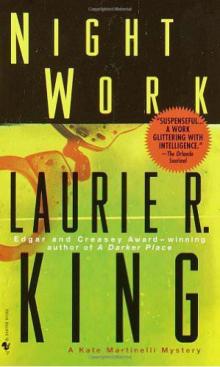 Night Work km-4
Night Work km-4 Mary Russell's War
Mary Russell's War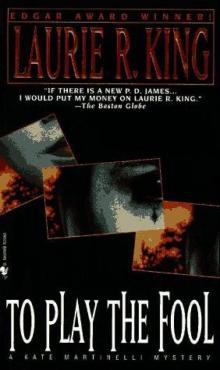 To Play the Fool km-2
To Play the Fool km-2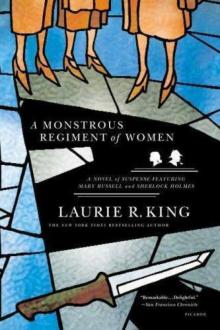 A Monstrous Regiment of Women mr-2
A Monstrous Regiment of Women mr-2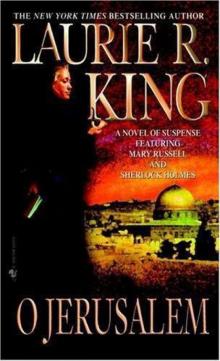 O Jerusalem mr-5
O Jerusalem mr-5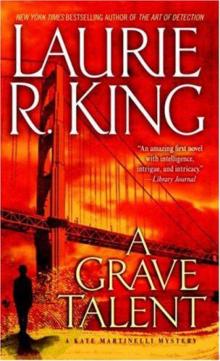 A Grave Talent km-1
A Grave Talent km-1